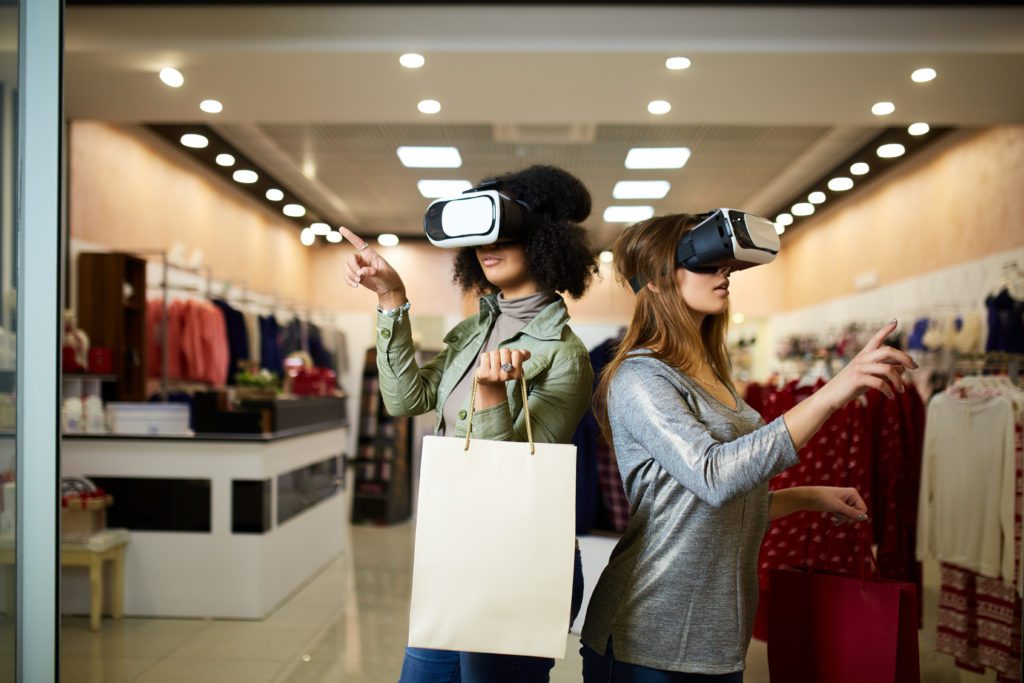
- New study shows that tasks in XR require more effort than real life.
- Specifically, tasks in AR require a higher mental and physical workload.
- XR can increase sales, but do we really need better consumerism?
Extended reality (XR) is an umbrella term that encompasses Augmented Reality (AR), Virtual Reality (VR), or Mixed Reality (MR). The technology can immerse you in a virtual environment or augment your real-life surroundings. For example, you could try on a new outfit in VR without leaving your living room or visit the store in person and use AR to assist you in making choices. The tech has been touted as the future of ecommerce, but the advancement into the virtual world comes with a significant catch; XR users must devote more effort to achieve tasks than in the real world.
About The Study
New research, published in February 2022’s issue of Information Systems Frontiers [1], was conducted by a multinational team of researchers who sought to understand the workload users experience when carrying out tasks in XR environments. The study centered around groups of participants shopping for vinyl records. The participants were allocated to one of four shopping experiences with different combinations of AR, VR, MR, or real-life experiences:
- Group 1: without VR; without AR.
- Group 2: without VR; with AR.
- Group 3: with VR; without AR.
- Group 4: with AR and VR.
The study didn’t skimp on the high end tech: Group 2’s AR experience was achieved via the Microsoft HoloLens, a pair of mixed reality smartglasses; Groups 3 and 4 used the Valve Index headset for VR, a fully immersive headset that PC Mag calls “the most impressive consumer VR headset we’ve seen yet” [2].
All participants were given ten Euros to spend in a vinyl record store. To ensure that the research centered around a real shopping experience with real decisions, the participants got to keep the (physical) record they shopped for.
The Workload
The research team used the NASA Task Load Index (NASA-TLX) to evaluate six “workload” categories to gauge ease of use of AR and VR for specific tasks. NASA-TLX subjectively measures an individual’s perceived workload, including physical and mental effort, level of frustration, and various other factors. In a nutshell, it’s a measure of how much cost or effort an individual must devote to accomplish a task.

After completing the tasks, the participants were asked a series of questions about their experience, like:
- How hurried or rushed was the pace of the shopping task?
- How successful were you in accomplishing what you were asked to do?
- How hard did you have to work mentally and physically?
A score was assigned to the workload sub-dimensions from 0 to 100, where a score of 0 indicated low levels of demand/effort/frustration and 100 indicated maximum levels. Overall workload was calculated by combining weights and ranks of the sub-dimensions.
Study Results
Overall, the in-reality shoppers had the easiest experience, reporting the lowest overall workload (M=26.308). The XR-mediated groups experienced higher workloads. Group 2, which used AR, was by far the worst performer, with significantly higher overall workload (M = 40.01). VR or AR, when used individually, resulted in higher physical exertion, including effort (head, hand, and body movements) needed to find and read information. The study also found that when used together, these negative aspects disappeared, perhaps because AR negated the difficulty of reading information in VR.
Conclusion
The study findings have important implications for XR designers and programmers, especially when it comes to usability. While VR can emulate real life without necessarily increasing workload, AR use is associated with higher physical and mental effort. The study authors recommend that designers consider various factors involved in completing tasks, like ease of use, mobility, and wearability. Awareness of the degrees of factors that increase mental demands is especially important when the target audience is vulnerable groups like children, people with disabilities, or elderly populations.
But…Do We Need It?
XR has the potential for replacing online and offline shopping experiences, providing consumers with the opportunity to shop whenever, wherever. The tech can also help salespeople fine tune sales pitches, shorten sales cycles [3], and boost online sales by up to 200% [4]. The continued development of XR also has a wide range of other applications, many of which may lead to significant improvements in people’s lives. For example, VR offers opportunities for surgical teams to train in new techniques, improve access to healthcare, and boost the mental health of seniors [5].
But while the development of VR to improve lives is a good step forward, the development of VR to encourage people to buy more is fueling unnecessary consumption and the endless search for greater profits. We already buy more than we need [6] and consumerism is destroying our environment and harming endangered species [7]. Perhaps now is the time to decide what applications of XR are necessary, and which are not.
References
[1] The Challenges of Entering the Metaverse
[3] How to Improve Sales Readiness and Sales Efficiency with VR
[4] A26
[5] How VR is Benefitting Seniors
